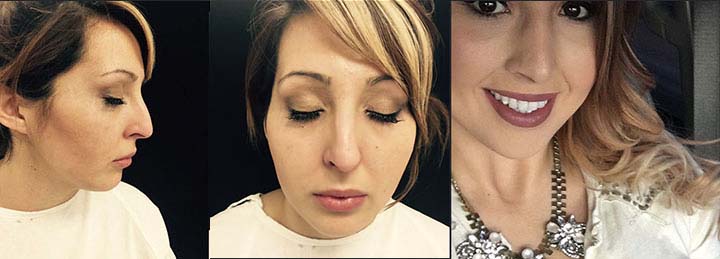Rhinoplasty
Rhinoplasty, commonly referred to as a “nose job,” is a surgical procedure that aims to reshape and enhance the nose. It has become increasingly popular as people seek to improve their facial harmony, correct nasal imperfections, and address functional issues. Rhinoplasty offers a unique opportunity for individuals to enhance their appearance, boost self-confidence, and potentially improve nasal breathing. This comprehensive article delves into the various aspects of rhinoplasty, including the procedure, different techniques, benefits, recovery process, potential risks, and considerations for a successful outcome.
Procedure and Techniques: Rhinoplasty can be performed using either an open or closed technique. In closed rhinoplasty, incisions are made inside the nostrils, resulting in no visible external scarring. Open rhinoplasty involves an additional incision on the columella, the strip of tissue between the nostrils, providing better access for the surgeon to manipulate the nasal structures.
During the procedure, Dr. Yañez carefully reshapes the nasal bones and cartilage to achieve the desired aesthetic and functional outcome. Techniques such as osteotomy (controlled bone breaking), cartilage grafting, septoplasty (straightening the nasal septum), and tip refinement can be employed to achieve the desired results. He may also use computer imaging software to simulate the potential postoperative appearance and guide the surgical plan.
Benefits and Results: Rhinoplasty offers numerous benefits, both aesthetically and functionally. From an aesthetic perspective, the procedure can address concerns such as a prominent nasal hump, a drooping or bulbous tip, a wide or asymmetrical nose, or uneven nostrils. By harmonizing the nose with the rest of the facial features, rhinoplasty can significantly improve overall facial balance and boost self-confidence.
Functional improvements are another crucial aspect of rhinoplasty. The procedure can correct structural abnormalities that cause breathing difficulties, such as a deviated septum, enlarged turbinates, or collapsed nasal valves. By improving nasal airflow and function, patients often experience enhanced quality of life and improved sleep patterns.
Recovery and Aftercare: The recovery process following rhinoplasty varies from patient to patient. Initially, patients may experience swelling, bruising, and mild discomfort, which gradually subside over time. Cold compresses, pain medications, and nasal sprays can help alleviate discomfort during the healing process. It is advisable to rest, keep the head elevated, and avoid strenuous activities for a few weeks after surgery.
Nasal packing or splints may be used to provide support and reduce swelling during the early stages of recovery. These are usually removed within a week or two. Patients should follow the surgeon’s post-operative instructions carefully, which may include gentle nasal rinsing, avoiding certain medications that can increase bleeding risks, and protecting the nose from accidental trauma.
Potential Risks and Considerations: Like any surgical procedure, rhinoplasty carries certain risks. These can include infection, bleeding, adverse reactions to anesthesia, scarring, persistent swelling, asymmetry, and dissatisfaction with the results. It is essential to choose a board-certified plastic surgeon like Dr. Yañez with expertise in rhinoplasty to minimize these risks and achieve optimal outcomes.
Realistic expectations are also crucial for a successful rhinoplasty experience. Patients should have open and honest discussions with Dr. Yañez about their goals, concerns, and the potential limitations of the procedure. Pre-operative consultations (pictures are often enough) allow Dr. Yañez to assess the patient’s nasal anatomy, discuss the available options, and formulate a personalized surgical plan.
Conclusion:
Rhinoplasty is a surgical procedure that can significantly enhance both the appearance and functionality of the nose. By addressing aesthetic concerns and improving nasal function, rhinoplasty empowers individuals to achieve facial harmony and boost their self-confidence. With proper research, planning, and the expertise of a skilled surgeon, patients can achieve successful and satisfying results.
